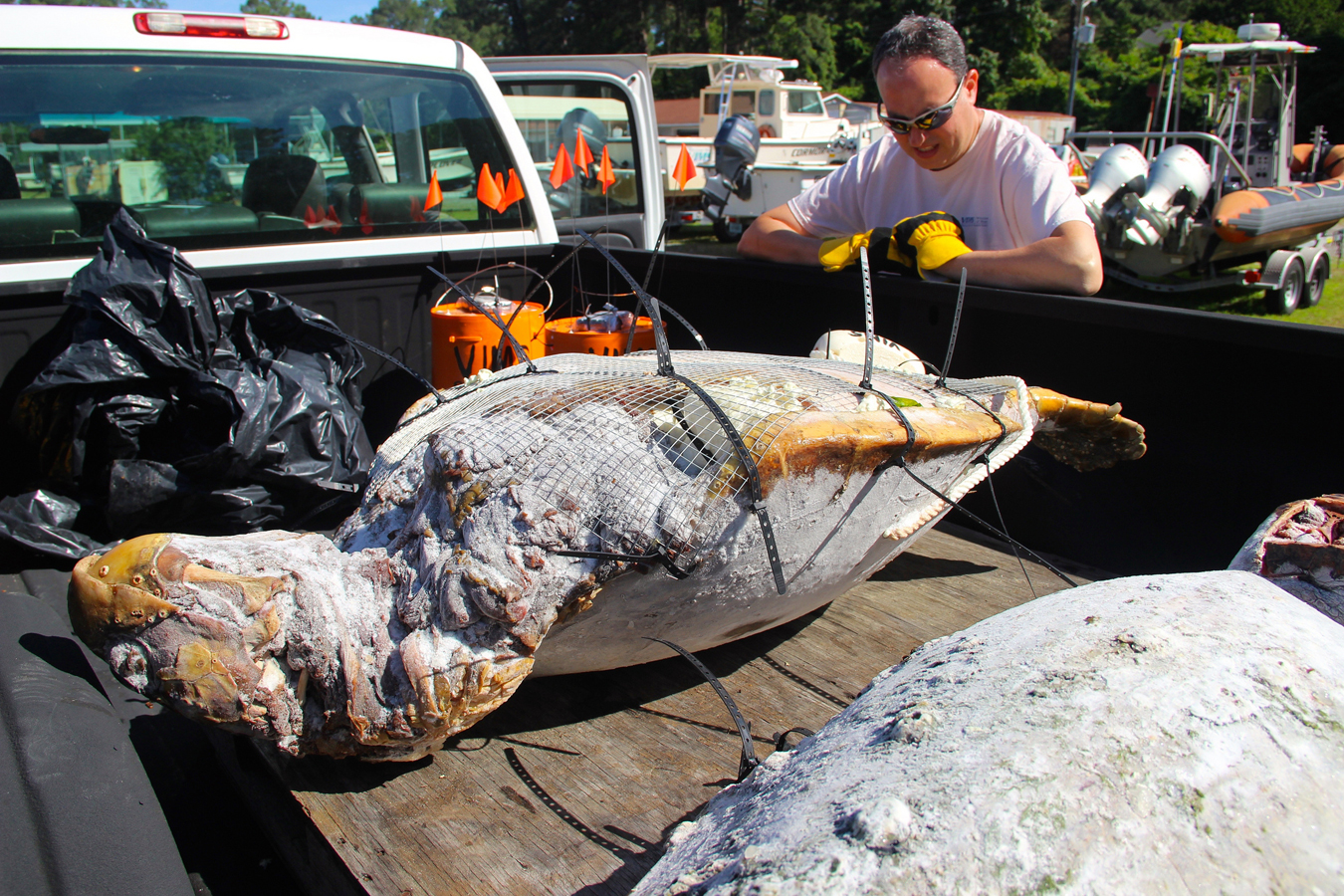
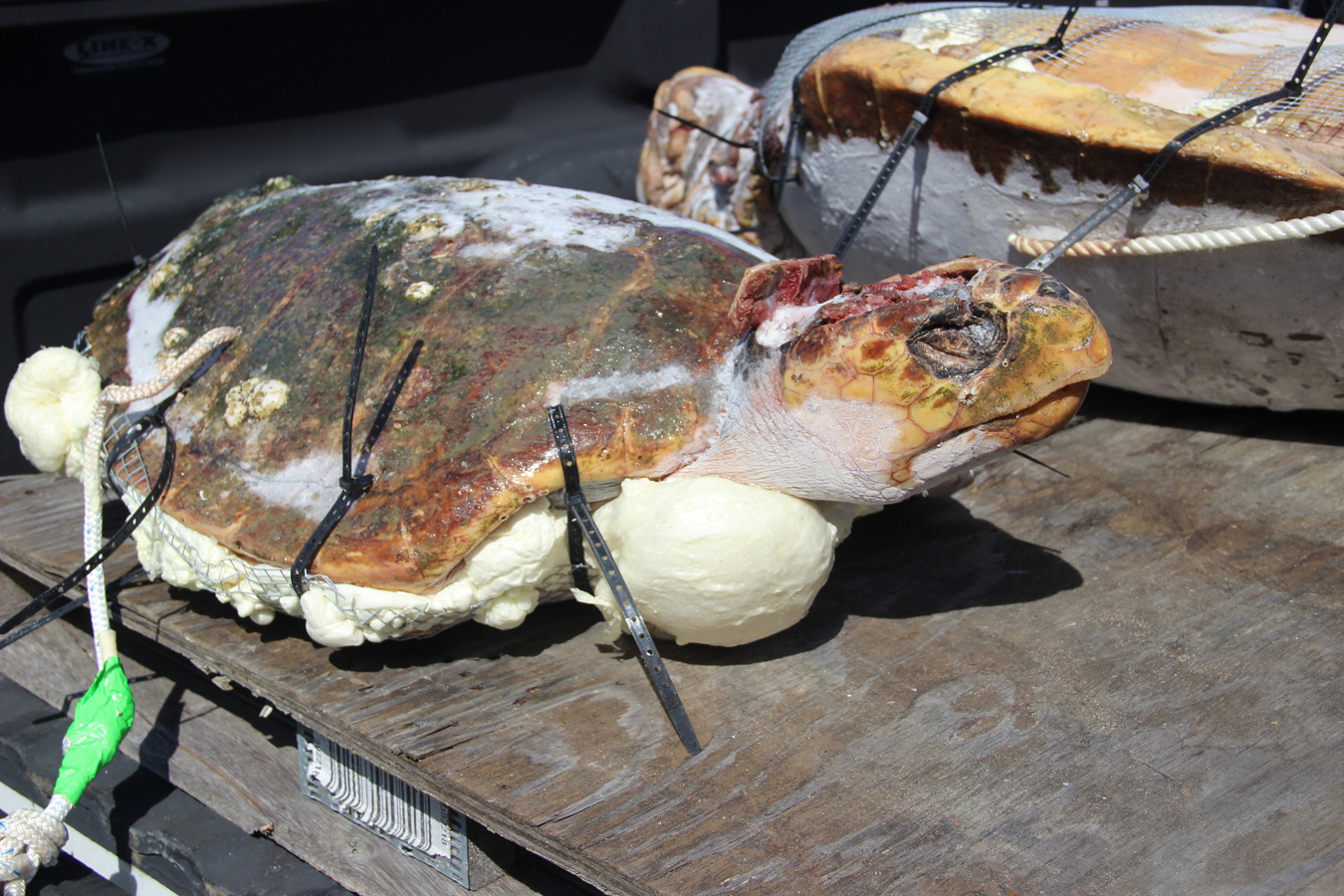
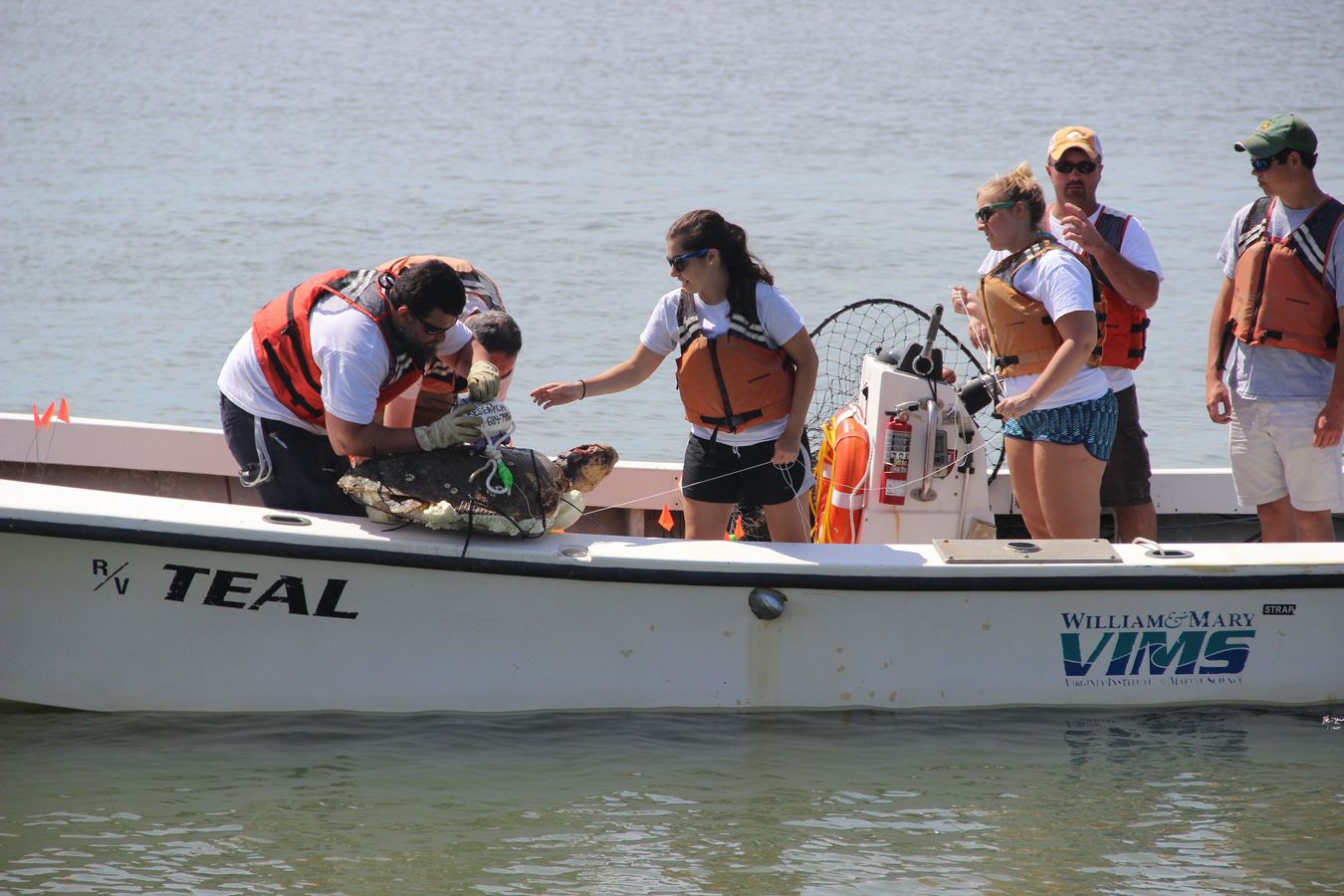
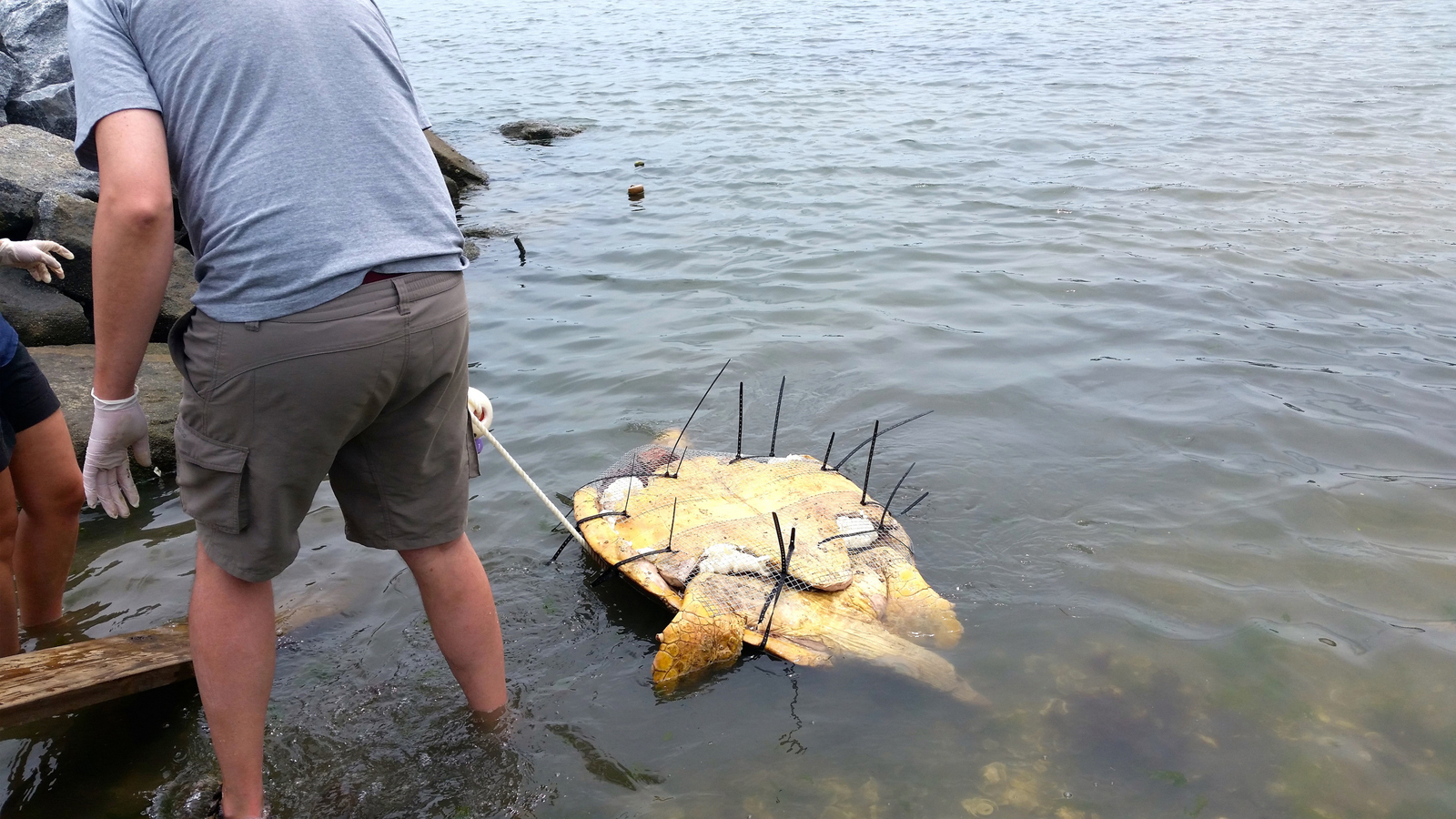
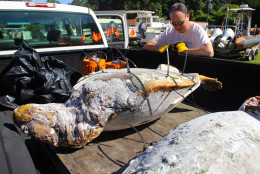
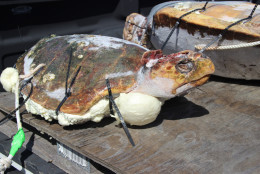
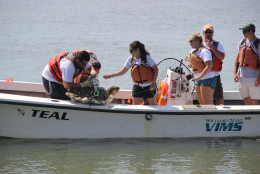
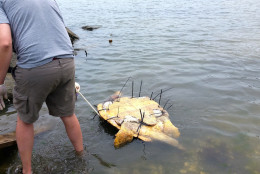
WASHINGTON — Hundreds of sea turtles wash up along the Chesapeake Bay every year, but researchers are still trying to figure out why.
The latest sea turtle carcass was found washed up in Lusby, Maryland, on Tuesday. Two scientists and an intern went out to examine the carcass, which they determined was a leatherback sea turtle.
Unfortunately, sea turtle strandings aren’t rare along the Chesapeake Bay.
“We saw a peak number in the early 2000s, anywhere from about 200 to 500 strandings were occurring,” said Bianca Santos, graduate student at the Virginia Institute of Marine Science.
Most of those strandings are of dead turtles, but the numbers have improved.
“Now, we see about 100 to 300 strandings a year that occur,” she said.
Most of these turtles are only found by people who see them while they are near the bay, meaning there could be many more washing up onshore that aren’t being accounted for.
However, the big problem for researchers is that they don’t know why the turtles are dying.
Enter the “Frankenturtle.”
Santos and her colleagues at VIMS have taken two sea turtle carcasses and attached a GPS tracker to them to try to find out where the turtles are dying. Once they know where they are dying, they can figure out how they are dying.
Of all the turtles they have studied, they know how only a few died.
“We’ve seen things like boat strikes, disease, plastic debris in their gut,” Santos explained.
Outside of those select few, finding the cause of death is incredibly difficult.
“Turtle shells are so hard that they are pretty resistant to any marks or lesions that may occur,” she said, adding that most of the strandings are of seemingly normal, healthy turtles.
Santos says sea turtles are in the bay during the summer months and most of these strandings happen in the late spring or early summer. They come north when the water gets warmer and head back south toward Florida or out to the ocean when the water cools.
The researchers said they believe the deaths could be caused by a variety of factors, whether it be boats, disease or sudden water temperature changes.







